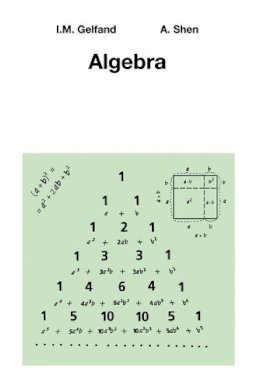
Stock image for illustration purposes only - book cover, edition or condition may vary.
Description for Algebra
Paperback. An elementary algebra text, presented in a clear and simple form that is intended to engage the curiosity and intellectual interest of students. Num Pages: 160 pages, 3 black & white illustrations, biography. BIC Classification: 4KL; PBF. Category: (UA) A / AS level; (UU) Undergraduate. Dimension: 234 x 157 x 9. Weight in Grams: 266.
This book is about algebra. This is a very old science and its gems have lost their charm for us through everyday use. We have tried in this book to refresh them for you. The main part of the book is made up of problems. The best way to deal with them is: Solve the problem by yourself - compare your solution with the solution in the book (if it exists) - go to the next problem. However, if you have difficulties solving a problem (and some of them are quite difficult), you may read the hint or start to read the solution. If there is no solution in the book for some problem, you may skip it (it is not heavily used in the sequel) and return to it later. The book is divided into sections devoted to different topics. Some of them are very short, others are rather long. Of course, you know arithmetic pretty well. However, we shall go through it once more, starting with easy things. 2 Exchange of terms in addition Let's add 3 and 5: 3+5=8. And now change the order: 5+3=8. We get the same result. Adding three apples to five apples is the same as adding five apples to three - apples do not disappear and we get eight of them in both cases. 3 Exchange of terms in multiplication Multiplication has a similar property. But let us first agree on notation.
Product Details
Publisher
Birkhäuser
Number of pages
160
Format
Paperback
Publication date
2013
Condition
New
Number of Pages
160
Place of Publication
Secaucus, United States
ISBN
9780817636777
SKU
V9780817636777
Shipping Time
Usually ships in 4 to 8 working days
Ref
99-1
Reviews for Algebra
“The idea behind teaching is to expect students to learn why things are true, rather than have them memorize ways of solving a few problems, as most of our books have done. [This] same philosophy lies behind the current text by Gelfand and Shen. There are specific ‘practical’ problems but there is much more development of the ideas … [The authors] have shown how to write a serious yet lively look at algebra.” —The American Mathematics Monthly “Were ‘Algebra’ to be used solely for supplementary reading, it could be wholeheartedly recommended to any high school student of any teacher … In fact, given the long tradition of mistreating algebra as a disjointed collection of techniques in the schools, there should be some urgency in making this book compulsory reading for anyone interested in learning mathematics.” —The Mathematical Intelligencer
